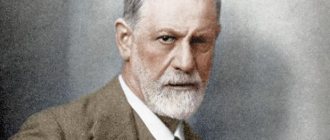Types and types of learning
Traditionally, there are 4 types of learning:
- addiction – adaptation to the influence of a stable stimulus, which implies the absence of reactions to the stimulus;
- classical conditioning – the formation of associations, connections between successive events;
- operant conditioning – readiness for certain consequences of an action;
- complex learning - applying strategies to solve a problem.
The following types of learning are also identified, which differ in the way they are achieved: reflexive (forming a connection between a stimulus and a reaction) and cognitive (in addition to analyzing the connection, an assessment is formed taking into account past experience and possible consequences).
In human life, learning is an integral part of activity. This process is carried out constantly, in various situations, at all stages of life.
The reflex level is characterized by an unconscious, automatic, unintentional nature. This type is characteristic of any age and is expressed in the assimilation of the distinctive features of the surrounding world.
In view of the specific focus, the following types of training are distinguished:
- sensory – discrimination of sensory signals from the environment;
- motor – development of useful actions;
- sensorimotor – performing complex controlled behavioral acts.
More important is the cognitive level, which is carried out through consciously directed attention, observation, testing, and analysis.
A distinctive feature of this direction is self-control when performing mental operations or exercises.
This level is also subject to classification into narrower subtypes:
- knowledge – theoretical discovery of new properties of the environment;
- skills – development of a set of actions to achieve a pre-formulated goal;
- actions – comprehensive application of existing theoretical knowledge and practical skills.
According to the results of research by psychologists, unconscious learning can be very useful in some cases. However, greater advantage is still given to conscious and purposeful control of actions.
Reward or punishment.
One of the problems of learning is not only to achieve new, desirable behavior, but also to get rid of unwanted manifestations. The main purpose of punishment is to eliminate existing behavior, not to replace it with new behavior. Often, for example, when raising children or teaching them, the question arises what is better: to punish for an offense or to wait for the desired behavior and reward the child. The greatest results are achieved when punishment accompanies old behavior and reward accompanies new behavior. Although this is just a general rule that cannot be applied in all situations, it highlights an important principle: one should pay attention not only to the behavior itself - undesirable, eliminated by punishment, and desirable, encouraged by reward - but also to the availability of alternatives to it. type of behavior. If you need to wean a child from pulling a cat's tail, then, according to this principle, it is necessary not only to punish the child, but also to offer him another activity (for example, playing with a toy car) and reward him for switching. If a person masters working with any mechanism, the instructor should not just wait patiently for him to do everything correctly, but show him his mistakes.
Approaches to Understanding Learning
There are several approaches to understanding the nature of the emergence and mechanisms of development of learning. Each point of view proposed by scientists has its own characteristics and must be considered in this context.
Conditionally, positions can be divided into several groups:
- theories of behaviorism - learning is interpreted as a random phenomenon caused by a certain set of circumstances, requiring an immediate response;
- theories of Gestalt psychology and neobehaviorism - the entire process of interaction begins with the emergence of spontaneous interest and ends with its complete satisfaction;
- theories that recognize learning as a cognitive activity, during which theoretical knowledge and practical skills are comprehensively applied.
R.G. Averkin highlighted some provisions, combining similar ideas from different approaches to understanding the essence of the phenomenon:
- Learning can be expressed in both gradual and abrupt changes in behavior.
- Changes in behavior are not due to the maturation of the organism, although development is unnatural without learning.
- Changes in behavior due to fatigue or the influence of provoking substances cannot be called learning.
- Regular exercise invariably improves learning.
- The ability to learn is available to varying degrees only at certain species levels.
Psychology: Educational psychology (p. 13)
Like any acquisition of experience, learning includes unconscious understanding of the content of the material and its consolidation (involuntary memorization). In animals, learning is the main form of acquiring experience. Directed learning in animals exists only in rudimentary form (examination of a new situation, imitation).
The ability to learn is possessed mainly by species that have advanced far in evolutionary development. If instinctive behavior is effective in an animal’s usual environment and ordinary circumstances, then, in essence, only individuals of those species in which the ability to learn and develop skills predominates to cope with new situations and unusual surroundings and form new behavioral acts.
The rudiments of the possibility of learning are already found in earthworms. To a moderate extent, it manifests itself in fish, amphibians, and reptiles. This ability develops as one moves up the evolutionary ladder. The most advanced forms - chimpanzees and humans - have almost no forms of behavior that allow them to adequately adapt to the environment from the moment of birth without training. In humans, almost the only forms of behavior that he should not learn are innate reflexes that make it possible to survive after birth: the sucking reflex, swallowing, sneezing, blinking, etc. In humans, the role and significance of learning changes during ontogenesis. In preschool age, learning is the main way of acquiring experience, then it is relegated to the background, giving way to learning - educational activity, although it does not lose its importance completely. The most important factor in learning is the place of the acquired material in the corresponding activity. A person learns better the material that takes the place of the goal of the activity.
3.1.4. Learning theories
There are many theories of learning. In each of them, one can highlight a separate aspect of the phenomenon being studied.
(https://www. *****/journals_all/issues/1996/965/965030.html; see the article “Two paradigms in the study of child development”).
According to some theories, in the process of teaching and learning there is a single learning mechanism (in both humans and animals); other theories view teaching and learning as different mechanisms.
To the first group
The theories of foreign psychology include:
l the theory of behaviorism (J. Watson), where learning is interpreted as a process of random, blind association of stimuli and reactions based on readiness, exercise, reinforcement or contiguity in time, unrelated to the psyche and cognition. Such theories contradict later established facts indicating the possibility of learning without reinforcement, without exercise, etc.;
l theories where learning is considered as a process of changing the mental reflection of the conditions of activity and behavior on the principle of passively establishing new connections (associationism), restructuring the initially holistic experience in the form of samples (Gestalt psychology) or plans (neobehaviorism). This also largely includes the theory of J. Piaget (Geneva School) and the theories of some representatives of the information approach and cognitive psychology. Cognitive psychologists are interested in what psychological structures are formed during learning. Many of them try to model the learning process in the form of computer programs (https://www. *****/journals_all/issues/1999/996/996048.html; see the article “Another look at the Piaget phenomenon”).
To the second group
include theories of domestic psychologists and a number of foreign authors. In humans, learning and teaching are considered by them as a cognitive process of assimilation of social experience of practical and theoretical activity. In animals, learning is interpreted as a process of changing innate species experience and adapting it to specific conditions.
, having analyzed the variety of learning theories, identified general provisions with which, in his opinion, most researchers agree:
1. Learning is a gradual or abrupt change in behavior. There are two types of temporal progression of the learning process. Forms of learning such as classical or operant conditioning occur gradually, while forms of learning such as imprinting or insight occur instantly.
2. Learning is a change in behavior that is not a direct consequence of the maturation of the organism, although development is always accompanied by learning. The problem of learning is closely related to the problem of development and maturation. Sometimes in a young organism it is difficult to distinguish the result of learning from the result of maturation, so they prefer to study learning in adults.
3. Learning is not a change in behavior due to fatigue or as a result of the use of psychoactive substances.
4. Exercise improves the learning process.
5. The species affiliation of an organism determines its learning capabilities (Psychology..., 2001).
3.1.5.
Problems of learning theory
As noted above, the concept of “learning” has only recently begun to be used in psychology as the broadest concept reflecting the process and result of a person’s acquisition of individual experience. Therefore, there are a number of pressing problems that require further study (see Fig. 5).
First of all, the problem of the relationship and differentiation of the concepts “learning”/”teaching”/”training”.
Secondly, the problem of the relationship and differentiation of the effects of learning and maturation/development. After all, not everything related to development can be called learning. For example, it does not include the processes and results that characterize the biological maturation of the organism; they unfold and proceed according to biological, in particular, genetic laws, although the maturation processes are, of course, closely related to the acquisition of new things by the organism and changes in existing experience. On the one hand, learning is almost always based on certain levels of biological maturity of the organism; on the other hand, training and teaching to a certain extent influence the maturation of the organism.
Thirdly, the problem of identifying general laws and patterns of learning is relevant. After all, on their basis, more specific laws of the formation of educational skills can be considered.
And finally, the problem of identifying the types, mechanisms and conditions of effective learning is of no less interest, both from theoretical and applied perspectives. We will dwell on this aspect in more detail.
3.2. Types of learning
3.2.1. Types of learning
3.2.2. Levels of learning
3.2.3. Varieties of associative learning
3.2.4. Types of intellectual learning
In psychological science, various types of learning have been studied in sufficient detail. Based on the work, a classification of various types of learning has been developed, presented (see Fig. 6) (1996; abstract).
3.2.1. Types of learning
All types of learning can be divided into two types: associative
and
intellectual.
Characteristic of associative learning
is the formation of connections between certain elements of reality, behavior, physiological processes or mental activity based on the contiguity of these elements (physical, mental or functional).
From the time of Aristotle to the present day, the basic principle of learning—association by contiguity—has been formulated in a similar way. When two events repeat with a short interval (temporal contiguity), they are associated with each other in such a way that the occurrence of one recalls the other. The Russian physiologist () was the first to study the properties of associative learning in laboratory conditions. He discovered that although the sound of the bell initially had no effect on the dog's behavior, however, after regularly ringing at the time of feeding, after a while the dog developed a conditioned reflex: the bell itself began to cause it to salivate. Pavlov measured the degree of learning by the amount of saliva released during a call that was not accompanied by feeding. The method of developing conditioned reflexes is based on the use of an already existing connection between a specific form of behavior (salivation) and a certain event (the appearance of food) that causes this form of behavior. When a conditioned reflex is formed, a neutral event (bell) is included in this chain, which is associated with a “natural” event (the appearance of food) to such an extent that it performs its function.
Psychologists have studied associative learning in detail using the method of so-called paired associations: verbal units (words or syllables) are learned in pairs; Subsequent presentation of one member of the pair triggers recall of the other. This type of learning takes place during the acquisition of a foreign language: an unfamiliar word forms a pair with its equivalent in the native language, and this pair is memorized until, when a foreign word is presented, the meaning conveyed by the word in the native language is perceived.
With intellectual learning
the subject of reflection and assimilation are the essential connections, structures and relationships of objective reality.
3.2.2. Levels of learning
Each type of learning can be divided into two subtypes:
· reflex;
· cognitive.
When learning is expressed in the assimilation of certain stimuli and reactions, it is classified as reflex; when mastering certain knowledge and certain actions, they talk about cognitive learning.
Learning occurs constantly, in a variety of situations and activities. Depending on the way in which learning is achieved, it is divided into two different levels - reflexive and cognitive.
At the reflex level
The learning process is unconscious and automatic. In this way, the child learns, for example, to distinguish colors, the sound of speech, to walk, to reach and move objects. The reflex level of learning is also preserved in an adult, when he unintentionally remembers the distinctive features of objects and learns new types of movements.
But for humans, much more characteristic is the higher, cognitive level of learning, which is built on the assimilation of new knowledge and new ways of acting through conscious observation, experimentation, comprehension and reasoning, exercise and self-control. It is the presence of a cognitive level
distinguishes human learning from animal learning. However, not only the reflexive, but also the cognitive level of learning does not turn into learning if it is controlled by any goal other than the goal of mastering certain knowledge and actions.
As studies by a number of psychologists have shown, in some cases spontaneous, unintentional learning can be very effective. For example, a child remembers better what is related to his active activity and is necessary for its implementation than what he memorizes specifically. However, in general, the advantage is undeniably on the side of conscious, purposeful learning, since only it can provide systematized and deep knowledge.
3.2.3. Varieties of associative learning
In each subtype there are several classes of learning (see Fig. 7).
Associative-reflex
learning is divided into sensory, motor and sensorimotor.
Sensory learning
consists in the assimilation of new biologically significant properties of objects and phenomena of the surrounding world.
Motor learning
consists in the development of new biologically useful reactions when the sensory component of the reactions is mainly kinesthetic or proprioceptive, i.e. when sensory information arises in the very process of performing the movement.
Sensorimotor learning
consists in developing new or adapting existing reactions to new conditions of perception.
Associative cognitive learning
is divided into teaching knowledge, teaching skills and teaching actions.
When teaching knowledge
a person discovers new properties in objects that are important for his activity or life, and assimilates them.
Skill teaching
consists in the formation of a program of action that ensures the achievement of a certain goal, as well as a program for the regulation and control of these actions.
Action teaching
involves the learning of knowledge and skills and corresponds to sensorimotor learning at the cognitive level.
Comparing sensory and motor models of learning, he wrote:
“The first (sensory model) emphasizes the expansion of knowledge as the driving task of learning. The second (motor model) is the expansion of activity programs as the leading task of learning.
The sensory concept emphasizes the motivation of activity as a condition for learning. Motor - achieving activity goals. From the sensory concept it follows: in order for certain properties of the world to be highlighted (reflected) by the student’s psyche and fixed in it, they must be significant for him, that is, related to his needs. From the motor side - in order for action programs to be formed and consolidated in the student’s psyche, they must lead to the set goal, that is, to realize his needs. The first asserts: in order for new knowledge to be absorbed by a student, he must “see” (“feel”) its usefulness. The second is that in order for new actions to be absorbed by the student, he must “see” (“feel”) their success.
It follows from the sensory concept: for learning to occur, it is necessary to create in the student a positive emotional attitude towards incoming information. It follows from the motor one: for learning to occur, the student must have a positive experience when performing the required actions.
The sensory concept presupposes the active cognitive activity of the student: analysis, synthesis, abstraction and generalization of incoming sensory data. Motor - active practical activity of the student; searching and testing suitable actions, monitoring their results and comparing them with the goal.
It is easy to see that these two concepts do not contradict each other, but simply consider different aspects of learning. At the center of the sensory concept is the consideration of reflective, and motor - regulatory activity of the psyche. The first emphasizes the informational, cognitive nature of learning, the second - its active, purposeful nature" (1970, pp. 49-50).
The above excerpt quite clearly shows the direction of the sensory and motor models of learning and quite rightly emphasizes, on the one hand, the limitations of each of them, and on the other, their mutual complementarity, since in any real process there is both sensory and motor learning and it is possible talk only about their relative predominance.
Associative learning does not exhaust all types of learning. It characterizes only simpler (albeit diverse) types of adaptive behavior modification.
3.2.4. Types of intellectual learning
More complex forms of learning relate to intellectual learning, which, like associative learning, can be divided into reflexive and cognitive (see Fig. 8).
Reflexive intellectual learning is divided into relational learning, transfer learning and sign learning.
The essence of teaching relationships is to isolate and reflect in the psyche the relationships of elements in a situation, separating them from the absolute properties of these elements.
Learning through transfer consists of “the successful use, in relation to a new situation, of those skills and innate forms of behavior that the animal already possesses” (Ibid. p. 59). This type of learning is based on the ability to identify relationships and actions.
This learning is associated with the development of such forms of behavior in which “the animal reacts to an object as a sign, that is, it responds not to the properties of the object itself, but to what this object signifies” (Ibid. p. 62).
In animals, intellectual learning is presented in its simplest forms; in humans, it is the main form of learning and occurs at the cognitive level.
Intellectual cognitive training is divided into teaching concepts, teaching thinking and teaching skills.
Learning concepts consists of mastering concepts that reflect the essential relations of reality and are enshrined in words and combinations of words. Through mastery of concepts, a person assimilates the socio-historical experience of previous generations.
Teaching thinking consists in “forming in students mental actions and their systems that reflect the basic operations with the help of which the most important relations of reality are learned” (Ibid. p. 77). Learning to think is a prerequisite for learning concepts.
Teaching skills is about developing in students ways to regulate their actions and behavior in accordance with the goal and situation.
The considered classification provides a fairly complete description of the main types of learning. However, the following comments are valid.
Firstly, it is necessary to clarify the content of teaching thinking and define its essence as the student’s mastery of the operations of analysis and synthesis aimed at reflecting being “in its connections and relationships, in its diverse mediations” (1946, p. 340).
Secondly, it should be noted that with intellectual learning we are dealing with the formation of connections, but “these are essential necessary connections based on real dependencies, and not random connections based on contiguity in a particular situation” (Ibid. S. 341).
3.3. The essence of the teaching
3.3.1. Interdisciplinary approach to teaching
3.3.2. Teaching as a type of activity
3.3.3. Versatility of the definition of doctrine
3.3.4. Basic theories of teaching in Russian psychology
3.3.1.
Interdisciplinary approach to teaching
The problem of teaching is interdisciplinary; Accordingly, it can be viewed from different positions. I. Lingart identifies nine aspects (positions) of consideration (1970, pp. 16-31).
From a philosophical
(in epistemological terms) teaching is a specific form of knowledge. In teaching, contradictions arise and are resolved between the objective and the subjective, form and content, etc.
From the position of axiology
Ethics teaching is considered as a process of value formation and self-determination, internalization of social norms, rules, and values.
With biological
point of view, teaching is an adaptation process where heredity, environment, adaptation, regulation are considered.
From a physiological
the teaching is considered in terms of neurohumoral mechanisms, the development of conditioned reflexes, patterns of higher nervous activity, analytical and synthetic activity of the brain.
From the perspective of psychology
teaching is considered as the activity of the subject, as an activity, as a factor of mental development.
From a pedagogical position
teaching is considered in the context of “an educational system, where upbringing and training represent a system of purposeful, desirable conditions from the point of view of the needs of society, which should ensure the effective transfer of social experience.”
From a cybernetic position
learning can be considered as an information process in a learning system, characterized by control through channels of direct and feedback connections, development and change of strategies, programs and algorithms.
3.3.2. Teaching as a type of activity
The entire diversity of human activity can be reduced to three main types - play, learning, work.
A game
- a type of unproductive activity, the motive of which lies not in its results, but in the process itself.
Teaching
— the student’s activity in acquiring new knowledge and mastering methods of acquiring knowledge.
Work
is a purposeful human activity aimed at preserving, modifying, adapting the environment to meet one’s needs, and at producing goods and services.
Teaching, which follows play and precedes work in the successive change of basic types of activity that occurs during the life of each person, is significantly different from play.
After all, any interaction with the world not only satisfies the needs of the individual, but also leads to a more complete and accurate reflection of the conditions of activity, which ensures the improvement of the methods of its implementation. Teaching is a necessary component of any activity and represents the process of changing its subject, determined by its subject content. This teaching differs from changes in activity caused by the physiological properties of the organism (its maturation, functional state, etc.) (see Khrest. 3.2).
There are different interpretations of the concept of “teaching” (Fig. 10).
Let's list some of them. For example, this is how the essence of the teaching is revealed: “The main goal of the teaching, in relation to which its entire social organization is aligned, is to prepare for future independent work activity; the main means is the development of the generalized results of what has been created by the previous labor of mankind; By mastering the results of past social labor, a person prepares for his own work activity. This process of learning does not occur spontaneously, not by gravity. Teaching is a side of the essentially social learning process - a two-way process of transferring and assimilating knowledge. It is carried out under the guidance of the teacher and is aimed at developing the student’s creative capabilities” (1999, p. 495; abstract).
: “This is an activity, the immediate goal of which is the very development of certain information, actions, and forms of behavior. Such specific activity of the subject, aimed at learning, with learning as its goal, is called teaching” (2000, p. 205).
Then the scientist continues: the teaching “...includes:
· assimilation of information about the significant properties of the world necessary for the successful organization of intellectual and practical activities,
· mastering the very techniques and operations that make up this activity,
· mastering the ways of using this information for the correct selection and control of these techniques and operations in accordance with the goal” (Ibid. p. 205).
3.3.3. Versatility of the definition of doctrine
A systematic, consistent analysis of the basic concepts of teaching to identify the features of its structural organization and its differences in different concepts at the same time revealed all the diversity of the very interpretation of this process, which is primarily due to differences in the general psychological approach and the author’s interpretations (1986; abstract) (see Krest. 3.3).
According to the analysis of teaching concepts, teaching is considered
How:
· acquisition of knowledge and skills to solve various problems ();
· assimilation of knowledge, skills and development - improvement - of general cognitive processes (I. Herbart);
· acquisition of knowledge, skills and abilities in certain disciplines ();
· active thought process associated with overcoming difficulties - the emergence of a problem situation (J. Dewey);
· “an active process of constructing new formations from elements of sensory and mental content with the necessary participation of external movements” (V. Lai);
· gaining knowledge and solving problems ();
· active process of internal initiative of the student, which is the internal side of the pedagogical process ();
· restructuring of previous structures of experience, where two phases are the formation (for the first time) of new forms of activity (success) and the preservation and reproduction of new forms of activity that have arisen (memory) (K. Koffka);
· different types of experience acquisition (J. Piaget)
3.3.4. Basic theories of teaching in Russian psychology
In Russian psychology, there are several approaches to analyzing learning problems. One of these theoretical approaches is to consider learning as students’ assimilation of knowledge and the formation of mental activity techniques in them (Meller, etc.). It is based on the position that schoolchildren’s assimilation of knowledge is determined by external circumstances (primarily the program and teaching methods) and at the same time is the result of the activity of the student himself (https://www.vygotsky.*****/html /da.php; see international department of cultural-historical psychology MSUPE).
The central point of learning is the assimilation of knowledge presented in the form of scientific concepts. Such assimilation does not come down to simply copying in the minds of students the concepts introduced by the teacher. This externally given concept is formed to the extent that it is the result of the student’s mental activity and the mental operations he performs (analysis, synthesis, generalization, abstraction). In the assimilation of concepts, successive stages arise: movement from incomplete knowledge to complete knowledge. This movement, depending on the content of the concepts, can be of a different nature. In many cases it goes from the particular, concrete to the general, abstract. But there is another option for assimilation: from the undifferentiated general to the particular, concrete, and through the concrete to the truly abstract. Thus, when mastering concepts about representatives of various social classes, the student initially learns only the diametrical opposition of these concepts and their main features. Concepts become meaningful in the future, as students acquire relevant specific knowledge.
The assimilation of knowledge is closely related to its application in various educational and practical situations. The application of acquired knowledge depends on the relationship between theoretical and practical, abstract and concrete thinking. They correlate differently at different stages of learning, which makes it necessary to use the processes of internalization and exteriorization (the transition from external actions to solve mental problems to action in the mental plane and vice versa).
In the learning process, not only knowledge is acquired, but also those mental operations with the help of which students obtain and apply knowledge are improved; methods of mental activity are formed, including both mastery of operations and the emergence of motives and needs for using these operations as methods of activity.
The development and fairly widespread use of mental activity techniques leads to the formation of certain mental qualities in students: activity and independence, productivity, flexibility, etc.
Learning is a developing process, including a transition from elementary situations, where it is carried out on the basis of imitation of a model with minimal activity of the student himself, to higher levels based on the “self-government” of the student, who independently obtains new knowledge or applies previously acquired knowledge to solve new problems .
Another approach to the problems of learning is contained in the theory of the gradual formation of mental actions and concepts, developed by (, 1985), (, 1998) and their colleagues. In this theory, learning is viewed as the assimilation of certain types and methods of cognitive activity, which include a given system of knowledge and subsequently ensure their application within predetermined limits. Knowledge, abilities and skills do not exist in isolation from each other; the quality of knowledge is always determined by the content and characteristics of the activity in which they are included (https://www. *****/journals_all/issues/1995/951/951053.html ; see the article “Cultural-historical development of mental processes and the theory of the gradual formation of mental actions”).
The unit acquired in the process of learning cognitive activity is a mental action, and the task of managing learning is, first of all, the task of forming mental actions with certain, predetermined properties. The possibility of such management is provided by the knowledge and use of laws according to which new actions are formed, and the conditions affecting their quality are identified and taken into account.
Such laws and conditions were the subject of research by the authors of the theory of phased formation. They found that the initial form in which a new mental action with given properties can be constructed among students is its external, material (or materialized) form, when the action is carried out with real objects (or their substitutes - models, diagrams, drawings and etc.). The process of assimilation of an action includes the initial mastery of its external form and subsequent internalization - a step-by-step transition to execution on the internal, mental plane, during which the action not only turns into mental, but also acquires a number of new properties (generalization, abbreviation, automation, rationality, consciousness) . An example of the formation of a mental action is the assimilation of counting, which is first carried out by actually rearranging objects (material form) or counting sticks (materialized form), then in terms of loud speech and ultimately completely “in the mind” (https://www *****/strukt/lab_gr/l-uchen.html; see laboratory of psychology of teaching PI RAO).
Summary
There are several concepts related to a person’s acquisition of life experience in the form of knowledge, skills, abilities, abilities. This is teaching, teaching, teaching.
Learning denotes the process and result of the acquisition of individual experience by a biological system (from the simplest to man as the highest form of its organization in the conditions of the Earth).
Teaching is defined as a person’s learning as a result of his purposeful, conscious appropriation of his transmitted (translated) sociocultural (socio-historical) experience and the individual experience formed on this basis. Consequently, teaching is considered as a type of learning.
Education
in the most common sense of this term means the purposeful, consistent transfer (broadcast) of sociocultural (socio-historical) experience to another person in specially created conditions. In psychological and pedagogical terms, learning is considered as managing the process of accumulating knowledge, forming cognitive structures, as organizing and stimulating the student’s educational and cognitive activity.
So, teaching/learning/learning
— this is the process of a subject acquiring new ways of carrying out behavior and activities, their fixation and/or modification. The most general concept denoting the process and result of the acquisition of individual experience by a biological system (from the simplest to man as the highest form of its organization in the conditions of the Earth) is “learning”. Teaching a person as a result of his purposeful, conscious appropriation of the socio-historical experience transmitted to him and the individual experience formed on this basis is defined as teaching.
There are many theories of learning.
In each of them, one can highlight a separate aspect of the phenomenon being studied. According to some theories, in the processes of teaching and learning there is a single learning mechanism (in both humans and animals); other theories view teaching and learning as different mechanisms.
There are a number of pressing problems that require further study: the problem of the relationship and differentiation of the concepts of “learning”/“teaching”/“training”; the problem of correlation and differentiation of the effects of learning and maturation/development; the problem of identifying general laws and patterns of learning; the problem of identifying types, mechanisms and conditions for effective learning.
All types of learning can be divided into two types: associative and intellectual. Each type of learning can be divided into two subtypes: reflex; cognitive.
The entire diversity of human activity can be reduced to three main types - play, learning, work.
Teaching, which follows play and precedes work in the successive change of basic types of activity that occurs during the life of each person, is significantly different from play.
The problem of teaching is interdisciplinary; Accordingly, it can be viewed from different positions.
Bibliography:
1. Bruner J. Psychology of cognition. M., 1977.
2. Gabay psychology: Textbook. allowance. M., 1995.
3. Gabai activity and its means. M., 1988.
4. Halperin learning and mental development of the child. M., 1985.
5. Ilyasov's learning process. M., 1986.
6. Itelson on general psychology: Proc. allowance. Ml.; M., 2000.
7. Itelson on modern problems in the psychology of learning. Vladimir, 1970.
8. The process and structure of human learning. M., 1970.
9. , Orlov motivation teachings. M., 1990.
10. Nemov: In 2 books. Book 2. Educational psychology. M., 1994.
11. Orlov. M., 1997.
12. Psychology: Textbook for humanitarian universities / Ed. ed. . St. Petersburg, 2001.
13. Rubinstein of general psychology. M., 1946.
14. Rubinstein of general psychology. St. Petersburg, 1999.
15. Talyzin psychology: Textbook. aid for students avg. specialist. textbook establishments. M., 1998.
16. Talyzin process of knowledge acquisition. M., 1975.
17. Shadrikov human activity and abilities: Textbook. allowance. M., 1996.
TOPIC 4. TRAINING AND DEVELOPMENT
4.1. The essence of the problem of the relationship between training and development
4.2. Basic approaches to solving the problem of the relationship between training and development
4.3. Concept of the zone of proximal development ()
4.4. Learning ability as the ability to learn
4.1. The essence of the problem of the relationship between training and development
4.1.1. The problem of the relationship between training and development as a central problem of educational psychology
4.1.2. Basic orientations of human knowledge
4.1.1. The problem of the relationship between training and development as a central problem of educational psychology
The problem of learning and development has always been and will be at the center of research not only in educational psychology, but also in many other areas of psychological science (see Fig. 1).
Its solution serves as the foundation for didactics and methods of teaching and education. wrote that “the correct solution to the question of the relationship between development and learning is of central importance not only for psychology, but also for pedagogy. Each concept of learning that a teacher formulates includes (whether he is aware of it or not) a certain concept of development. In the same way, the concept of mental development that a psychologist will formulate (whether he is aware of it or not) also contains a certain theory of learning” (1946, p. 156).
| Due to the large volume, this material is placed on several pages: 13 |
Get text
Imprinting
- a specific form of learning, consolidation in memory of the characteristics of objects during the formation or correction of innate behavioral acts. This mechanism was first described by Lorenz by observing the behavior of goslings. This mechanism is very important for survival. In humans, social connections are established early and are deep. The imprinting mechanism serves, as it were, as a connecting link between the innate and the acquired. Examples of imprinting: first love; first impression effect; first success/failure effect; stages of formation of phobias; imprinting the image of the mother and father in the first months of the child’s life.
Introduction
Learning is the process and result of individual experience. The term “learning” itself comes from animal psychology, into which E. Thorndike introduced it. Any experience can be acquired through learning: for a person it is knowledge, skills and abilities. Learning includes an unconscious understanding of the content of the material and its consolidation (involuntary memorization).
In humans, the role and significance of learning changes during ontogenesis. In preschool age, learning is the main way of acquiring experience, and then it is relegated to the background, giving way to learning and educational activities. The most important factor in learning is the place of the acquired material in the corresponding activity: a person learns better what is the goal of his activity.
Reaction formation method
– a sharp transition to the opposite to deny an unacceptable desire or feeling. In this case, the initial desire or feeling is not directly experienced: the mechanism of the false personality immediately comes into play, and in return a strong opposite desire or feeling is experienced. The reaction is formed almost instantly, without any sensation of effort. An example of the formation of reactions: a child received a 4 for a test, and his friend (who copied him) received a 5; the child is offended (injustice), he is angry with a friend, but internal contradiction and reluctance to offend a friend leads to the fact that the child “turns a blind eye to it” and congratulates the friend on a good grade.
TRANSFER AND INTERFERENCE
Learning a particular type of behavior rarely occurs in isolation. More often, there are similarities between the situations in which different types of behavior are learned, or similarities between the types of behavior themselves. When, for example, two successive learning tasks are similar, completing the first one makes it easier to complete the second; this effect is called “carryover.” Positive transfer occurs when mastering the first skill helps in mastering the second; for example, having learned to play tennis, a person will more easily learn to play badminton, and a child who can write on a blackboard will more easily master writing with a pen on paper. Negative transference occurs in opposite situations, i.e. when mastering the first task interferes with learning to perform the second: for example, having incorrectly remembered the name of a new acquaintance, it is more difficult to learn the correct name; The ability to change gears in a car of one brand can make it difficult to use a car of another brand, where all the levers are located differently. The general principle is as follows: positive transfer is possible between two activities if the second of them requires the same behavior as the first, but in a different situation; Negative transfer occurs when learning a new way of behavior to replace the old one in the same situation.
Negative transfer is of particular interest. When studying it experimentally, “extinction” is used, i.e. procedure when the reinforcement stops. Although such experiments are usually carried out to monitor the disappearance of previously reinforced behavior, they lead to the conclusion that the latter is always replaced by new behavior - even if only inaction. The so-called verbal interference, the essence of which is that new verbal material is remembered worse due to the overlap of other, already known material of the same kind; in such cases, the task of associative learning is to form a new association to a word or object that is already associated with something (for example, when the subject is required to remember that in French his pet is called chien, not dog). Finally, in psychotherapy there is a method of counterconditioning, according to which patients suffering from obsessive fear (phobia) are taught to relax when they see an object that causes fear or something that symbolizes it. Thus, a patient who is afraid of snakes is first taught the method of deep relaxation, and then he is gradually taught to think about snakes during relaxation, replacing the previously existing fear with calm behavior. In all such situations, when two interfering reactions arise, the severity of conflicting types of behavior clearly depends on the time that has elapsed since their development. If success is assessed immediately after a new task has been mastered—either in a series of experiments without reward, or by repeatedly calling the dog the word chien, or by repeatedly pairing relaxation with the idea of a snake—the second type of behavior appears to be dominant. However, if there is a break in training, the first type of behavior reappears. For example, if a person, after diligently practicing, finally learned to change gears in a new car, where the handles are located differently than in the old one, then a week-long break will lead to the restoration of the previous habit and errors in the application of the new skill. Periodic training of a new type of behavior time after time reduces the likelihood of relapse, but since previous actions are never completely eradicated, some experts are inclined to believe that the original learning is never completely erased, and new reactions only dominate over old ones.
Learning through reasoning (reflection)
Reasoning is a thought process. It is used when a problem cannot be solved in the usual way or there is no standard solution for it “on the fly.” Learning by reasoning occurs in two stages: the available data are considered and connections are made between them; constructing hypotheses and testing them “in the mind” (the emerging hypotheses are related to past experience). The results of such learning are used in the future in similar and other situations. An example of reflection: is it worth borrowing a large amount of money, what will be the consequences if I don’t repay the debt on time, etc.
Latent learning
– lies in the possibility of involuntary familiarization with a situation or sequence of events, as a result of which a readiness is created to perform practical actions in the future that are adequate to the given situation, or that provide acceleration of subsequent targeted learning. An example of latent learning: while doing homework from TV, a student heard an interesting fact about an animal; the next day in biology class, the teacher asked about this animal and the student answered successfully.







